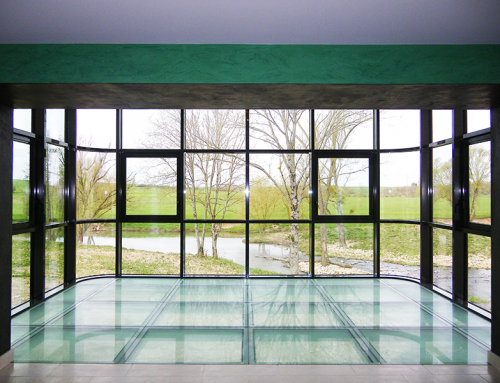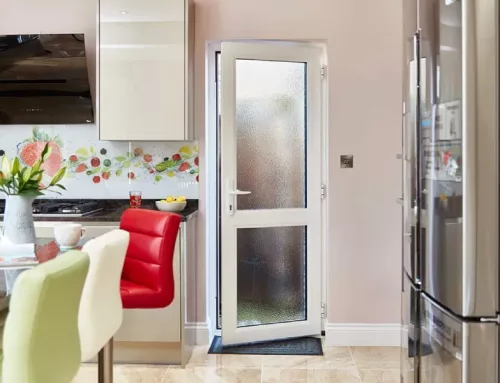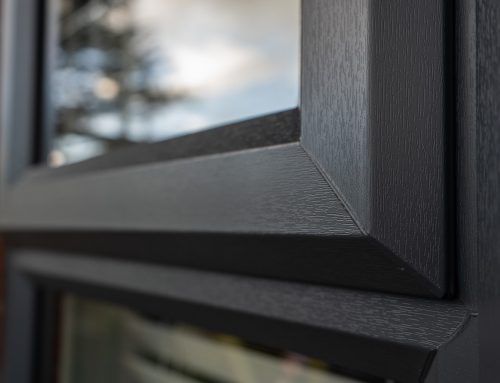uPVC, also known as unplasticized polyvinyl chloride, has been gaining popularity in the home renovation industry due to its many benefits and advantages. This lightweight plastic building material is known for its durability, low-maintenance properties, and resistance to weathering, chemicals, and UV light.
What is uPVC?
uPVC, or unplasticized polyvinyl chloride, is a type of plastic building material that is widely used in the construction industry due to its exceptional strength and low-maintenance properties. This lightweight material has become increasingly popular as an alternative to painted timber, particularly in the home improvement sector.
One of the primary benefits of uPVC is its resistance to a wide range of environmental factors, including chemicals, sunlight, and oxidization from water. This makes it an ideal choice for outdoor applications, such as double-glazed windows and doors, where it can withstand exposure to the elements without fading, cracking, or warping.
In addition to its suitability for windows and doors, uPVC is also commonly used for a range of roofline products, including downpipes, guttering, and fascias. This is due to its low cost and long-lasting durability, which makes it a cost-effective choice for homeowners looking to improve the look and performance of their homes.
It’s worth noting that while uPVC is often referred to as PVC or PVCu, all these terms refer to the same plastic building material. So, whether you’re looking to upgrade your windows, doors, or roofline, uPVC is a versatile and reliable choice that can deliver excellent results for years to come.
The science behind uPVC
The history of uPVC dates back to 1935 when it was first produced and has since become a popular building material for industrial use over the past 50 years. The manufacturing process of uPVC involves using sodium chloride to obtain chlorine gas through electrolysis. Petroleum or natural gas is then used to create ethylene, which is combined with liquid vinyl chloride and chlorine to produce uPVC.
PVC, which stands for polyvinyl chloride, is a chemical compound consisting of chlorine, carbon, and hydrogen. The “U” in uPVC represents “unplasticized,” indicating that the material has not been softened by plasticizers. Instead, heat and UV stabilizer additives are added to make it suitable for use in windows, doors, and other outdoor applications. These additives help uPVC retain its strength and color, making it highly resistant to fading, warping, or discoloration even when exposed to harsh environmental conditions.
What are uPVC windows?
uPVC windows are a type of window made from uPVC material, which is a popular building material due to its thermal efficiency, durability, and low-maintenance properties. Modern advancements in uPVC window design have made them increasingly popular among homeowners as they offer an affordable, yet high-quality alternative to traditional wood-framed windows.
One of the key advantages of uPVC windows is their thermal efficiency, which makes them an excellent insulator and helps to reduce energy bills. This feature is particularly appealing to environmentally conscious homeowners looking to lower their carbon footprint and save money on their heating and cooling costs.
Moreover, uPVC windows are also available in a range of colors and finishes, allowing them to complement a variety of architectural styles and home designs. This versatility has helped to make uPVC windows a popular choice for both new builds and renovations.
In addition to their aesthetic appeal, uPVC windows are also incredibly low-maintenance. They do not require any painting or staining, and a simple wipe with a damp cloth is all that is needed to keep them looking their best for years to come. This makes them a cost-effective option for homeowners who want to avoid the ongoing maintenance and upkeep associated with traditional wood-framed windows.
What uPVC window styles can you get?
uPVC material is known for its versatility and adaptability, and it has undergone significant development over the years to provide more style and color options for homeowners. As a result, uPVC windows are now available in a wide range of styles and designs that cater to different architectural and design preferences.
Among the most popular uPVC window styles are uPVC Casement Windows, which feature one or more panels that open outwards on hinges. These windows are versatile and can be designed to fit a wide range of home styles.
Another popular uPVC window style is the uPVC Sliding Sash Window, which features a traditional design that is ideal for period properties. These windows are typically made up of two sashes, one that slides over the other, providing excellent ventilation and a classic look.
uPVC Tilt and Turn windows are also gaining popularity for their versatility, as they can be tilted inwards for ventilation or opened fully for easy cleaning. These windows are also ideal for modern homes, with their sleek and contemporary design.
For those looking to add extra space and light to their homes, uPVC Bay Windows are an excellent choice. These windows project outwards from the property and provide an extended seating area and additional natural light.
Finally, uPVC Bespoke Windows are also available for those looking for something unique and customized. These windows can be designed to fit specific shapes and sizes, making them an ideal choice for properties with non-standard window openings.
What is the difference between PVC and uPVC windows?
PVC and uPVC are two terms that are commonly used interchangeably to refer to the same plastic building material. However, there is a technical difference between the two.
PVC, which stands for polyvinyl chloride, is a type of plastic that is softened with plasticizers to make it more flexible and easier to shape. These plasticizers also make the material more susceptible to damage from UV light and weathering over time.
On the other hand, uPVC, which stands for unplasticised polyvinyl chloride, does not contain plasticizers and is therefore more rigid and durable than PVC. It is also more resistant to weathering, UV light, and chemicals, making it an ideal material for use in construction and home improvement.
While some people in the trade may use PVC and uPVC interchangeably, it is important to note the technical difference between the two. In general, uPVC is the preferred material for windows, doors, and other construction applications due to its strength, durability, and low-maintenance properties.
So, the next time you come across the terms PVC and uPVC, remember that they are referring to the same type of plastic building material, but with a slight technical difference.



